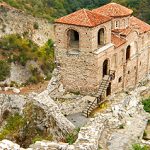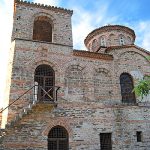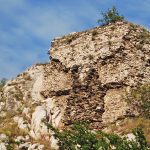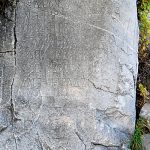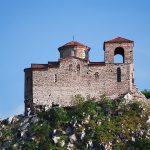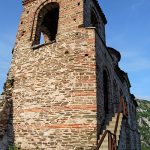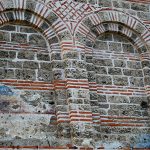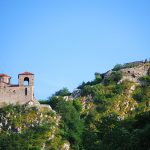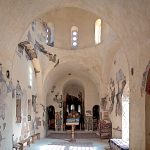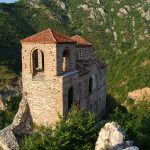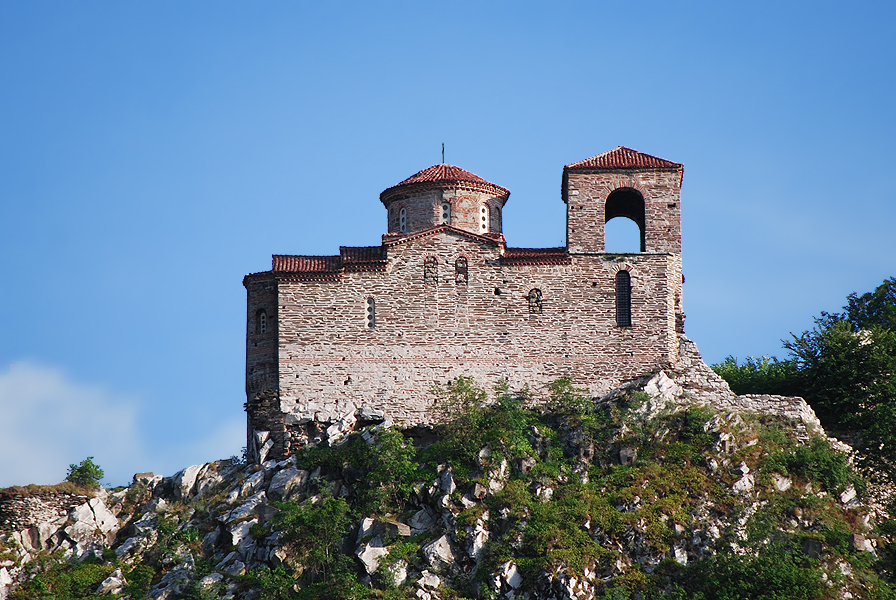
Asen’s Fortress

Asen’s Fortress is the most interesting and most often visited tourist attraction in the Asenovgrad region.
It is located three kilometers from the city on the top of a cliff, on the left bank of the Asenitsa River.
There is a scenic route to the fortress branching off the road just south of Asenovgrad heading toward Smolyan. The natural cliff massif where the fortress is situated comprises an area of 12 hectares.
With drops that are almost vertical and at times even overhanging above the river below, it is impregnable on three sides. Its strategic location and natural defenses explain why it has been used since the days of the Thracians, who fortified it in the 5th century BCE.
The fortress was rebuilt during the time of the Roman Emperor Justinian as one of some 300 fortresses erected to defend the Empire against invasions by Slavic tribes. Asen’s Fortress has seen three periods of substantial construction – during the 9th, 11th, and 13th centuries.
Th first small fortress tower was built by the Byzantines and further construction continued over time, as the towns of Petrich and Stenimahos surrounded it. Given its strategic location at the entrance to the pass connecting Thrace with Norther Greece and the Aegean Sea, and since it I slocated in the midst of fertile farmland, gradually Peter’s Fortress (as it was called then) became an independent agricultural center with its own administration, army, and military command.
The first written reference to the fortress dates from the founding of the nearby Bachkova Monastery in 1083. At that time the Byzantine military commander Grigori Bakuriani dedicated the monastery and bequeathed to it the Petrich Citadel and the village next to it.
In 1204, the fortress fell into the hands of the Crusaders who were commanded by the Belgian knight René du Trois. The knight withstood a 13-month siege laid by the forces of the Bulgarian Tsar Kaloyan (reign 1197-1207), according to The Chronicle of the Fourth Crusade recorded by Jeffrey de Village Dien, Court of Champagne.
In 1231, Tsar Asen II (reign 1218-1241) completed the largest expansion adn rebuilding of the fortress, as proclaimed on a carved stone monument. This is the reason why the fortress was later named after him, and why the inhabitants of Stanimaka, the city beneath the fortress, renamed their city Asenovgrad in 1934.
The fact that the fortress has been controlled by the Thracians, Romans, Byzantines, Crusaders, Bulgarians, and Ottomans, and each era has left its archeological record, all preserved in the historical museum in Asenovgrad, explains why the Medieval Asen’s Fortress is one of the most-visited tourist destinations in the Asenovgrad region.
The results of many years’ of archeological study and excavation of the fortress led to the discovery of the foundation of a feudal castle with a supporting complex of living quarters, a domestic church for the lord of the castle, two cisterns, a and a fortress tower, all connected by stone steps.
Beneath the feudal castle was discovered what is now known as the church courtyard, with the well-preserved, two-story Blessed Virgin of Petrich Church. Written records reveal that after the death of Sultan Bayazid in 1402, there was a struggle for succession between his sons Syuleiman and Musa Kesedzhi.
Musa further fortified the Petrich Fortress but he couldn’t hold it and put it at the mercy of his brother. After Musa’s capitulation, the fortress was razed to its foundations, so it could no longer appeal to opponents of the throne as a strategic location.
For some unknown reason only the fortress church was spared, and it is now one of the most notable examples of Medieval Christian architecture.
The first story of the church was probably set aside as an ossuary, though it never served that purpose, and the sanctuary itself is on second story, with frescoes dating to the 13th century. The church is one of the oldest in all of Eastern Orthodoxy, and has a tower once used as a belfry and watchtower.
After it was restored it was consecrated as a functioning Orthodox church. The church is the most notable site at Asen’s fortress and an obligatory destination for any excursion to Asenovgrad and Bachkovska Monastery.
Asen’s Fortress offers a clear picture of Medieval military fortification and gives visitors, if only for a little while, the feeling that they have been transported back to a much earlier age. The approach to the church and feudal castle is by way of a narrow path, to the left of which are preserved walls that are 3 meters thick and 2-4 meters high.
There is a parking area at the entrance to the fortress. Asen’s Fortress was declared an architectural monument in Issue 20 of the State Records of 1973. Visitors can continue on to the Saint Atanasi Chapel, Saint Nikola Chaple, Saint Dimitar Chapel, and Saint Iliya Chapel, where the environs offer areas for rest and picnics.
An trail allows hikers to continue along the Roman Road between Asenovgrad and Bachkovski Monastery. In the Asenovgrad region there are 5 monasteries, 33 churches (14 in the city itself), and more than 40 chapels. Along with these, Asen’s Fortress comprises part of the cultural itinerary through the Holy Mountains of the Rhodope.
Asenovgrad, Plovdiv Province, 4230, Bulgaria.

